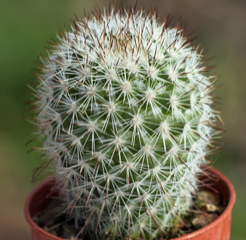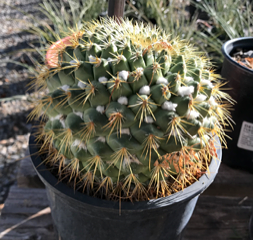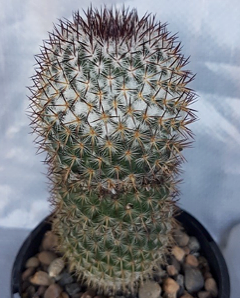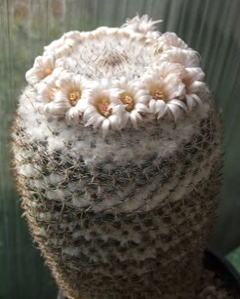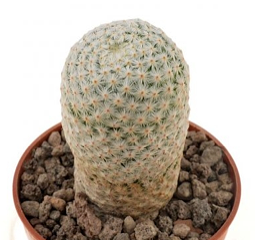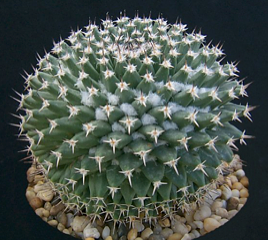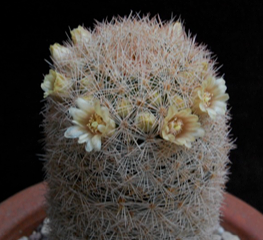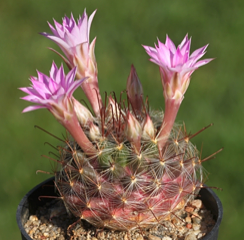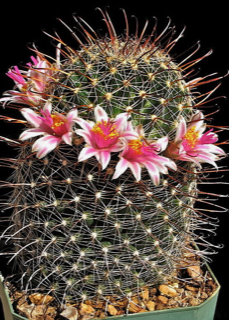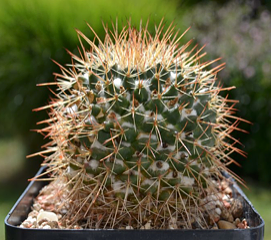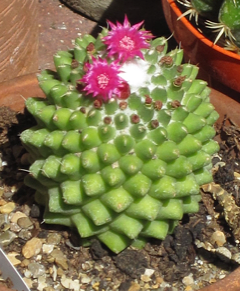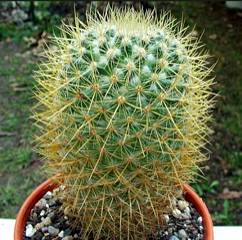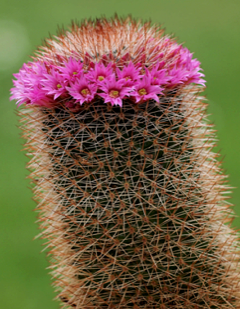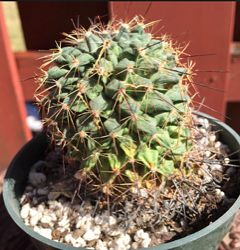Submitted by: Jim Tanner
[Ed: Clarification of the meaning of “Single Headed” … For our Mini-Show we will accept Mammillaria that currently have only one head. Otherwise it is confusing because some members of the genus that are generally known as “single head” can produce offsets with age, and conversely some that usually offset may never produce any.]
This month’s ‘Mini-Show Plant of The Month’ Cactus is ‘Mammillaria Single Headed’, regardless of the size. Some mammillaria remain as solitary plants their whole lives, while others will clump. If your mammillaria plant currently has one head, you are welcome to enter the show.
There are around 300 species of Mammillaria. Most are native to Mexico, some are native from southwestern USA, Caribbean, Central America, or even a couple in northern South America. In their range you can find Mammillarias from sea level to high elevations. They also vary in size from miniature 1 inch in diameter (2.5 cm), to columnar types 1 foot tall (30 cm).
The name Mammillaria comes from the Latin for “nipple”, because the areoles (structures carrying the spines) are carried by nipple like structures instead of being organized in ribs like many other cacti. Another significant difference is that the flowers are not coming from the areoles, but from the area at the juncture of 2 tubercles.
As could be expected from so many species, their growing requirements are quite varied. Many species are easy and fast to grow and bloom while young, which is why they are very popular. Some are quite hardy while others will rot easily if kept too cold. All of them require excellent drainage. This is more easily accomplished by using a good cactus soil mixture, and using a shallow pot.
In general the Mammillarias bloom easily, but many species need a rest period in winter during which they are kept cool in order to bloom. Furthermore flowers form a ring on tissue grown the previous growing season, so it is important to get them to grow every year, which means regular watering and fertilizing during their growing period.
